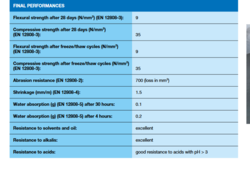H
hmtiling
3mm grout joints, 1 expansion joint(giving sub 40m2 bays) and a decoupler(thin if sub 6mm tile) will be fine in my opinion. Not an expert on these screeds, as Ajax is, but I thought these gypsum screeds had less movement than traditional screeds?
I'd happily fix decoupler with anyhyfix, switch to cement based on top, incorporate a soft joint(Silicon joint as opposed to unsightly expansion joint) and sleep well at night.
I'd happily fix decoupler with anyhyfix, switch to cement based on top, incorporate a soft joint(Silicon joint as opposed to unsightly expansion joint) and sleep well at night.


